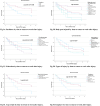Resuming work roles after injury in a low-income context: Multiple factors influencing the return to work outcomes
- PMID: 39441811
- PMCID: PMC11498707
- DOI: 10.1371/journal.pone.0308816
Resuming work roles after injury in a low-income context: Multiple factors influencing the return to work outcomes
Abstract
Background: Return to work (RTW) is an important outcome indicator for the effectiveness of rehabilitation services, and the functional status and overall recovery among individuals who have experienced injury. Despite the rising incidence of traumatic injury among economically productive citizens in Ethiopia, there is a paucity of evidence about the RTW status of injury survivors. This study examined factors associated with RTW success and determinants of time to RTW after injury in Ethiopia.
Methods: An institution-based cross-sectional study was conducted to collect data retrospectively one year after patients arrived at the study setting due to traumatic injuries. Medical records of all patients who visited the emergency room of a large public hospital in Addis Ababa were reviewed. Data were collected from survivors of traumatic injury, interviewed by telephone one year post-injury. Multivariable logistic regression and survival analysis were carried out to explore factors.
Results: Of the 251 participants, 75% were young adults (age </ = 39 years), 78% were male, 78% were urban residents, 41% were injured by road traffic collisions, and 59% returned to work within one year. The logistic regression model revealed short inpatient admission (AOR = 4.20; 95% CI: 2.10-8.50; p ≤ 0.001), no disability (AOR = 4.44; 95% CI: 2.10-9.60; p ≤ 0.001), motivation to RTW (AOR = 3.50; 95% CI: 1.61-7.50; p = 0.002), no chronic illness (AOR = 2.31; 95% CI: 1.14-4.70; p = 0.020), being in an administrative position (AOR = 5.32; 95% CI: 1.11-25.78; p = 0.038) and receiving injury compensation (AOR = 3.10; 95% CI: 1.22-7.73; p = 0.017) as factors for successful RTW within a year after injury. Further, the Cox regression analysis identified immediate access to healthcare after injury (AHR = 1.54; 95% CI: 1.05-2.25; p ≤ 0.026) and having injury of penetrative to internal organ, strain, sprain, dislocation or soft tissue (AHR = 1.81; 95% CI: 1.20-2.80; p = 0.007) as determinants of early RTW after traumatic injury.
Conclusion: The study uncovers factors crucial to RTW planning and interventions, and provides insights to minimize barriers, foster a smooth transition to employment, and optimize survivors' lives after injury.
Copyright: © 2024 Ahmed et al. This is an open access article distributed under the terms of the Creative Commons Attribution License, which permits unrestricted use, distribution, and reproduction in any medium, provided the original author and source are credited.
Conflict of interest statement
The authors have declared that no competing interests exist.
Figures



Similar articles
-
One-year outcomes of traumatic injuries among survivors in Ethiopia: a cross-sectional study on the employment outcomes and functioning state.Trauma Surg Acute Care Open. 2024 Apr 16;9(1):e001209. doi: 10.1136/tsaco-2023-001209. eCollection 2024. Trauma Surg Acute Care Open. 2024. PMID: 38646619 Free PMC article.
-
Getting back to work after injury: the UK Burden of Injury multicentre longitudinal study.BMC Public Health. 2012 Aug 1;12:584. doi: 10.1186/1471-2458-12-584. BMC Public Health. 2012. PMID: 22853715 Free PMC article.
-
Injury epidemiology and emergency department length of stay in trauma hospital in Addis Ababa, Ethiopia.PLoS One. 2024 Nov 11;19(11):e0309962. doi: 10.1371/journal.pone.0309962. eCollection 2024. PLoS One. 2024. PMID: 39527528 Free PMC article.
-
Predictors for return to work after physical injury in China: A one-year review.Work. 2018;60(2):319-327. doi: 10.3233/WOR-182735. Work. 2018. PMID: 29865101 Review.
-
A systematic review and meta-analysis of return to work after mild Traumatic brain injury.Brain Inj. 2018;32(13-14):1623-1636. doi: 10.1080/02699052.2018.1532111. Epub 2018 Oct 11. Brain Inj. 2018. PMID: 30307758
References
-
- Schultz I.Z. and Gatchel R.J., Handbook of return to work: From research to practice. Vol. 1. 2015: Springer.
-
- Cullen K.L., et al.., Effectiveness of workplace interventions in return-to-work for musculoskeletal, pain-related and mental health conditions: an update of the evidence and messages for practitioners. Journal of occupational rehabilitation, 2018. 28(1): p. 1–15. doi: 10.1007/s10926-016-9690-x - DOI - PMC - PubMed
MeSH terms
LinkOut - more resources
Full Text Sources
Medical

